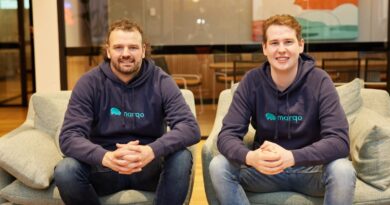As growth becomes more elusive, a new set of software product benchmarks emerges
Even the fastest-growing software startups aren’t expanding as fast as they used to.
Of course, this is partly by choice; you have to trade off growth if you want profitability, and vice versa. The yardstick for measuring startup performance has changed over the past year, but changing startup performance standards means that we need a new baseline for fast growth, VC firm OpenView argues in its fourth annual Product Benchmarks Report.
“As SaaS companies have pivoted away from growth-at-any-cost, we’ve updated the report’s definition of ‘fast-growing’ from 100% to 75% year-on-year growth,” the report’s authors wrote.
Based on a survey of 1,000 private software companies, the report found that 22% of software startups qualified for OpenView’s definition of ‘fast-growing,’ down from 32% last year, despite the lower growth rate needed to enter the cohort. OpenView ran the survey with product analytics startup Pendo.
It is not just private software startups that are finding growth harder to come by; listed SaaS companies are struggling as well. Almost all the most valuable SaaS businesses that went public since 2019 saw their net dollar retention (NDR) decline in 2023 compared to 2022.
We’ve observed that too: Snowflake’s most recent earnings are a good indicator that even the companies with the most impressive NDR are not immune to market changes.
The right NDR for SaaS startups to target is a huge topic, and OpenView typically addresses it in the SaaS Benchmarks Report that it releases in the fall. As for this product benchmarks report, it is much more focused on the operational levers that software companies can pull to emulate the best in class. This is obviously a top concern for founders hoping to find ways to unlock new revenue without huge investments.
Finding one’s group
What do healthy SaaS product benchmarks look like in 2023? Well, it’s complicated. If you are selling enterprise contracts, you can’t expect the same sign-up rate as you would for a self-serve product catered to developers, for example.
“This is why we tried to cut the data in different ways, so that people can find the relevant metrics for their specific product experience,” said OpenView operating partner Kyle Poyar, one of the report’s authors.
Another goal of this segmentation, Poyar added, is to show companies some of the decisions they can take if they want to move to a different bucket. “Things like what kind of customer you’re selling to, whether you have a freemium motion, a free trial motion or a reverse trial…a lot of that is actually under your control as a business.”
One of the key changes that many founders are pondering is whether they should adopt some form of product-led growth (PLG), as opposed to more traditional sales-led growth.
In 2022, OpenView’s previous report showed that product-led companies were twice as likely as sales-led peers to grow more than 100% year on year. Such growth rates may be out of reach this year, but it still explains why companies are considering PLG. However, adoption of this strategy remains uneven and there are many nuances worth considering.





